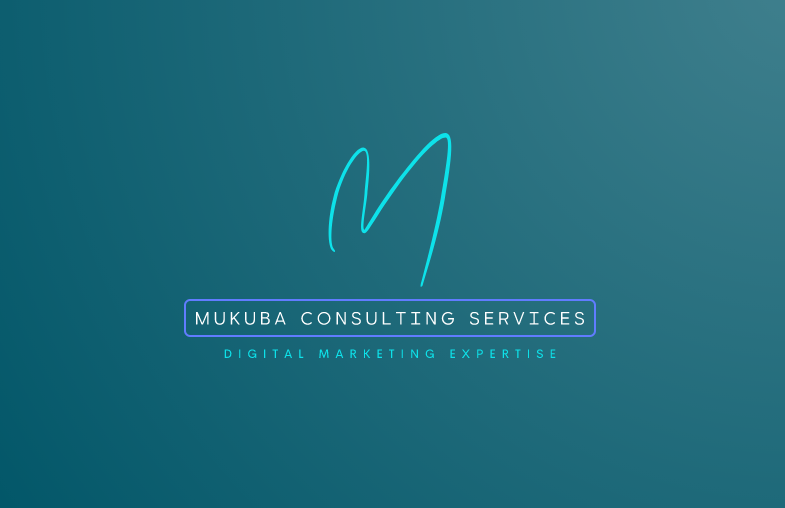While organic search engine optimization through on-page and off-page optimizations should always be the foundation, paid enhancements can multiply those efforts when applied judiciously. In the modern digital landscape, business owners have access to a wide array of SEO tools and services they can invest in to boost visibility, traffic and leads.
However, determining which paid tactics are most appropriate and where to allocate limited marketing budgets requires careful strategic planning. Throwing money at SEO without clear goals or metrics is an easy way to waste funds with little return.
And paid activities should never replace quality original content or relationship building which remain the long-term drivers of organic success.
This article explores some of the common paid SEO options available today, the potential benefits of each, and tips on integration to maximize results. While not comprehensive, the following paid enhancements represent those most relevant when looking to scale up search performance through a combination of organic and paid activities.
With the right implementation focused on problem-solving for target audiences, businesses can see their digital presence and authority grow exponentially compared to relying solely on unpaid efforts.
Paid Backlinks
Building quality backlinks from authoritative sites is one of the most impactful things you can do for SEO. However, getting these types of natural backlinks can be a slow process that requires outreach and relationship building. That’s where paid backlinks come in. By paying for sponsored links or guest posts on other sites, you can accelerate the acquisition of new domain authority flowing to your site.
Guest Posts

Reaching out to sites in your niche and offering to write a sponsored guest post in exchange for a backlink embedded somewhere in the article is one approach. Make sure the content is valuable and not too promotional.
The article should be properly researched, well written based on the publication’s standards and provide genuine value to its audience. Provide high-resolution images along with the post if possible to improve engagement.
Look for mid-sized blogs and magazines versus gigantic media sites that may be out of reach. Ensure the website is a strong match for your target topics and audience.
To source potential sites, search engines like Google for popular long-tail keyword queries your target customers would use and rank the domains by authority and relevance. You can also search business directories to filter sites by location and industry.
Carefully review a site’s About page and sample articles to assess quality before contacting them. Always be polite, professional, and flexible in negotiations since guest posting deals ultimately require the other party’s cooperation.
The cost for a quality guest post on an established niche site usually ranges from $250-1000 depending on their traffic and credentials. Set expectations in advance in terms of deliverables, timelines and any links or assets required from the publisher.
Track results through Google Search Console or SEMrush to measure any traffic or ranking impacts within 90 days. Ongoing relationship building through additional relevant content over 6-12 months usually delivers the best long-term results.
Sponsored Links

Another option is paying blog networks, directories, or article sites to include a text link back to your site embedded somewhere on the page. For example, you may sponsor a roundup post on a major industry blog in exchange for the 2nd or 3rd link going back to a relevant page on your site.
Look for authoritative sources of long-form, evergreen content read by your target audience. Review metrics like domain authority, backlink profile, and traffic through tools like SEMrush or Ahrefs. Considerations include whether the site is regularly updated, link placement options, and how prominent links will be on the page relative to other text. Cost structures vary but aim for nofollow links under $100 and follow links $200-500 depending on site strength.
As with guest posting, set goals for the sponsorship in terms of exposures or click-throughs over a testing period before expanding budgets. Closely monitor not just rankings but overall increases in sessions from the referring domain after placement to validate effectiveness. Consistency through occasional repeat sponsorships can fortify new referring authority for ongoing SEO impacts.
Paid Placement Links
Another backlinking approach involves working with link-building services or freelancers who have relationships with relevant site owners open to including a one-way text link pointing to your site for a fee. This paid placement strategy aims to tap into the curated authority and traffic of prestigious domains through careful outreach by an experienced link builder on your behalf.
Due diligence is critical to avoid “link schemes” that undermine your site or come across as unnatural. Request samples of successfully secured links and references from current clients. Fee structures start around $150-500 per link depending on the source website’s quality and popularity.
As with all paid links, continually assess placements through Google Search Console and analytical tools to validate benefits to your business metrics before renewing contracts. Focusing high authority links toward priority landing pages targeting high-intent long-tail queries improves chances of impact.
Regardless of approach, moderation is key when deciding how many links to acquire at once through paid methods versus allowing more gradual organic growth. Aim for no more than 5-10 relevant backlinks per month across all sources, whether natural or paid to avoid coming across as unnatural or “spammy” which harms your site over the long run. Building new quality referring domains consistently through a multi-method combination provides the best risk-adjusted results over time.
SEMrush Ads and SEMrush Ranking

SEMrush is a powerful SEO tool that provides data on rankings, keywords, backlinks, and more through various paid features to accelerate performance.
SEMrush Ads
With SEMrush Ads, the platform analyzes a user’s Search Engine Results Page (SERP) data to identify targeted keywords with strong commercial intent where paid ads may be effective. SEMrush then bids on those keywords and runs text ads linking back to the chosen landing pages. Users only pay when an ad is actually clicked, with costs generally ranging from $5-30 per click depending on the competitiveness and commercial potential of that search query.
This can be a cost-effective approach to directly tapping into queries difficult to rank for organically in the short term. Benchmarks should include average click-through rates, time on site from paid referral traffic compared to organic, and any spill-over impacts to organic rankings for monitored terms over 3-6 month testing periods.
Starting with smaller monthly budgets under $500 allows for evaluating ROI before scaling up spending. Targeting mid and long-tail keywords strengthening top-of-funnel brand awareness shows promise.
SEMrush Ranking
With SEMrush Ranking, users submit URLs and target keywords to be analyzed for on-page and off-page optimization factors compared to top organic results. The platform then purchases search engine ads with the goal of driving clicks to the submitted pages with the underlying hypothesis this additional exposure may positively influence search algorithms to consider ranking them higher organically in the future.
Costs range around $50-500 monthly per keyword depending on its competitiveness and SEMrush’s estimated difficulty level. As with any paid ranking tool, brands should carefully track organic changes through Google Search Console to measure true algorithmic impacts versus just short-term paid clicks.
Repeating optimization steps identified in SEMrush reports provides the foundation for sustainable progress – paid efforts alone may deliver transient results that fail to last. Starting with a focused set of priority mid-tail keywords at the lower end of spending allows calibrated testing and attribution of SEMrush Ranking’s potential to augment SEO.
Both SEMrush Ads and SEMrush Ranking options represent pay-to-play approaches hypothesizing more search engine surface area exposure can induce improvements, whether through direct clicks or indirect ranking factors.
Their viability depends on the strength of underlying technical, content, and linking fundamentals already in place – paid “hacks” alone almost never deliver lasting organic benefits without real user or search engine validator signals behind them. With testing and moderation, paid SEMrush tools provide viable options to potentially turbocharge keyword targeting as part of a holistic SEO strategy.
Image Optimization Services

High-quality, optimized images are important for user experience, engagement, and SEO. However, selecting stock images, optimizing them for search and website speed, and securing commercial licenses take time and technical skills which some companies lack in-house.
Several services now offer to handle all image-related tasks for a monthly or per-image fee.
Stock Image Services
Massive stock image libraries like Shutterstock, iStock, and Getty Images provide millions of professionally shot photos, vectors, and illustrations businesses can incorporate onto their owned properties like websites and marketing collateral.
After a one-time annual subscription fee starting around $50-150, clients gain full commercial reuse rights through simple download integrations.
While do-it-yourself SaaS image builders and free stock sources exist, pre-licensed options from premium vendors provide guaranteed protection against future intellectual property issues that can arise from user-generated uploads.
Their extensive collections also cover virtually any visual need across industries. For businesses focused on delivering polished, on-brand experiences, reputable stock providers ensure legal, high-resolution assets for enhanced visual storytelling.
Image Optimization Services
Services like Kraken, Compressor.io, TinyPNG, and ImageKit specialize in optimizing images already owned or licensed for specific technical requirements. They recompress without loss of quality, extract metadata and alt text, resize dimensions and formats for web versus print and deliver optimized JPEGs, PNGs, and SVGs optimized for load speed across devices and browsers.
Costs typically range $15-100 per month based on data transfer amounts or the number of images optimized. While DIY optimization using command line tools provides cost.
Guest Posting Services

As discussed earlier, guest posting is a powerful link-building technique. However, finding relevant sites, crafting high-quality articles, and getting them published takes considerable effort.
Guest posting services handle all aspects for a fee:
- Researching sites that accept sponsored posts.
- Writing the articles to the sites’ quality standards.
- Negotiating placements and getting links embedded.
- Tracking and reporting on results.
Cost usually ranges from $100-1000 depending on number of placements and difficulty of sites targeted. Look for providers with experience and samples of published work.
Even just ordering a few placements monthly outsources part of the link-building process so you can focus efforts elsewhere. As always, content quality should be the priority over quantity of links.
Offsite SEO Monitoring and Reporting

Keeping tabs on hundreds or thousands of links, citations, directories and more across the web is challenging without automated tools.
Paid offsite SEO tracking services monitor your digital footprint and provide monthly or quarterly reports with:
- Backlink gains and losses each period.
- Top linking domains and pages.
- Broken or discontinued links to fix.
- New high authority mentions to capitalize on.
- Competitor backlink changes.
Cost ranges from $50-500/month based on the number of monitored keywords and domains. The insights help identify optimization opportunities and potential issues earlier.
Paid Analytics Software

While Google Analytics is free, it lacks advanced features found in paid analytics platforms like:
- Segmentation & custom reporting.
- Multichannel funnels and attribution.
- A/B testing.
- Tag management.
- Data exports beyond standard views.
Platforms like Google Analytics 360, Adobe Analytics, and Amplitude charge $150-1000/month depending on data volumes and user licenses needed. For large sites and e-commerce stores, the actionable insights justify the cost.
Conclusion
Paid tools and services, when used strategically, enable companies to further their SEO efforts beyond just organic keywords and activities alone. While not always necessary, outsourcing particular tasks ensures well-executed implementations of tactics like link-building or analytics that deliver results.
Approaching paid SEO options thoughtfully increases the chances of seeing a return through higher visibility, traffic and conversions



